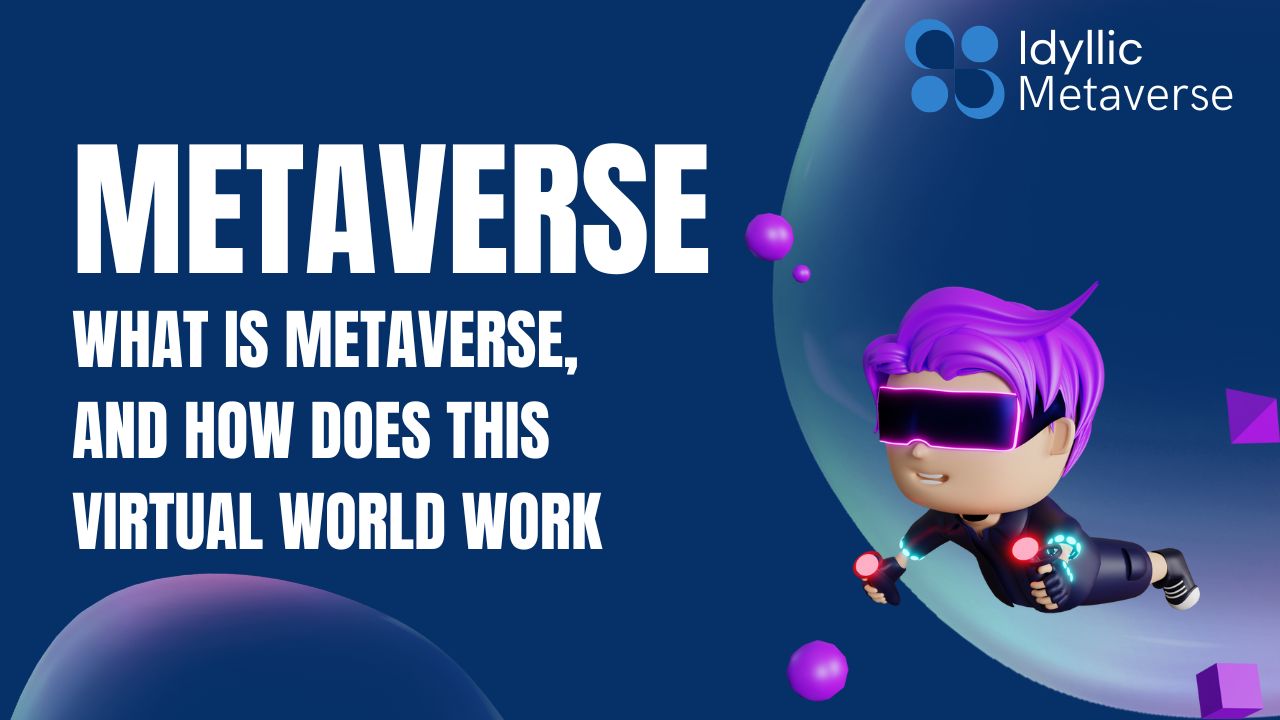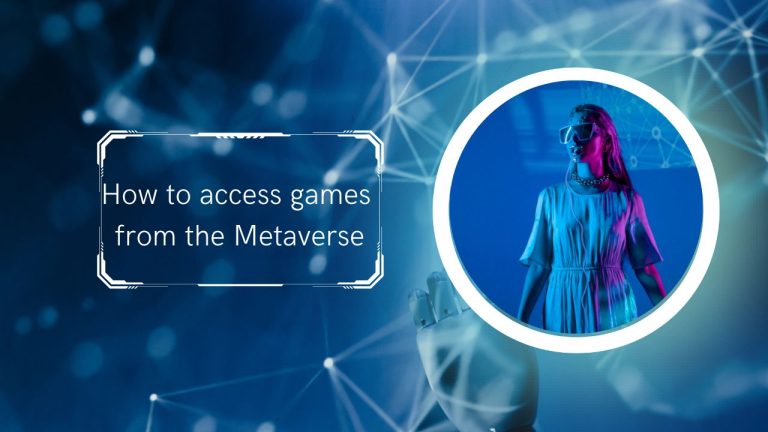What is Metaverse, How Does This Virtual World Work
Define Metaverse:
The metaverse is a virtual reality that combines elements of social media, online gaming, augmented reality (AR), virtual reality (VR), and cryptocurrencies. Augmented reality enhances the user experience by superimposing visual elements, sound, and other sensory input onto real-world settings. The metaverse is an open, shared, and persistent virtual world with numerous digital spaces where users can access a variety of services and experiences. To ensure a sense of presence in the metaverse.
The Metaverse and Meta:
Meta has been going to talk about the metaverse ever since, stating in a press release dated October 17, 2021, that the metaverse is “coming soon.” “a new phase of interconnected virtual experiences using technologies like virtual and augmented reality. At its core is the idea that by enhancing one’s “virtual presence,” interacting online can become much more similar to interacting in person.”
The metaverse is expected to grow in popularity as investors and businesses seek to be a part of what could be the next big thing. The metaverse is “going to be a big focus of Facebook’s, and I think that this is just going to be a big part of the next chapter for the way that the Internet evolves after the mobile Internet,” Zuckerberg said before announcing the name change to technology site The Verge. “I also believe that doubling down in this area will be the next big chapter for our company.“
Particular Considerations:
Considering that the metaverse has not yet been developed, you are less likely to find clarity on how does metaverse work and more likely to find clarity on its impact. The origins of the concept of metaverse may help you gain a better understanding of how it can provide value. The metaverse, much to everyone’s surprise, is not a new concept, despite its recent popularity.
The term “metaverse” was first used in a science-fiction novel called Snow Crash in 1992. Surprisingly, the novel depicts an almost realistic depiction of how the metaverse would appear. The metaverse was painted by author Neal Stephenson as a futuristic and ultimate version of the internet, a virtual space where users’ actions affect their physical lives.
Snow Crash by Neal Stephenson contains a brief explanation of how the metaverse works. The book depicts the metaverse as a persistent virtual world with digital social interactions, as well as virtual avatars and games. Many other books, television shows, and films have featured crude depictions of the metaverse throughout history.
How will the metaverse function:
As application scenarios mature, Metaverse will evolve into a system that is exceptionally large-scale, extremely open, and dynamically optimized. This system will be built collaboratively by creators from various fields, such as cyberspace experts, hardware engineers, and average users, resulting in a diverse range of virtual reality application scenarios. The result will be a massive ecosystem of digital applications.
Explanation of Metaverse Operation:
The metaverse examples help to establish a foundational understanding of how the metaverse works. You are already aware that the metaverse is a vast, open, and persistent virtual space shared by all users. The metaverse ensures data continuity while also allowing users to create and monetize assets and experiences within the metaverse.
However, you must gain a better understanding of how the metaverse works by exploring its various layers. The metaverse architecture’s seven layers provide a formidable understanding of how the metaverse works. Here is an overview of the significance of each layer in the metaverse’s architecture.
Experiences:
The first element visible to users in the metaverse would be the experiences. In this case, you can refer to either three-dimensional visuals or two-dimensional experiences. In a nutshell, metaverse experiences are any activity in which you can participate, such as shopping, gaming, social interactions, or online gaming.
Discovery:
Discovery is another critical component for top metaverse companies because it enhances user experiences. In the metaverse ecosystem, for example, inbound discovery systems such as search engines could aid in the discovery of new services and experiences. The metaverse’s discovery layer, on the other hand, includes the benefits of social curation alongside metaverse ratings and stores.

Creator Economy:
In the digital age, the metaverse has transformed the role of creators and developers. To create a great application in the early days of the web, developers needed coding expertise. You can use low-code tools to create applications in the metaverse. The metaverse’s creator economy can provide easy access to design tools and marketplaces. Furthermore, the creator economy fuels commerce and workflows for the creation of new metaverse assets and experiences. As a result, users are more likely to have complete control over their assets’ ownership and management.
Spatial Computing:
The next critical metaverse component for comprehending ‘how the metaverse works’ is spatial computing. Some of the prominent highlights of spatial computing components for the metaverse include virtual reality, augmented reality, 3D engines, geospatial mapping, and multitasking UIs. The combination of these technologies can ensure that users have immersive metaverse experiences.
Human Interface:
Another critical aspect of metaverse architecture is the human interface component. It is critical for assisting users in accessing the metaverse and thus serving as portals into the metaverse. The human interface in the metaverse is used to provide immersive metaverse experiences. Haptic devices, wearables, smart glasses, mobile phones, gestures, and neural routes, for example, could make it simple to enter the metaverse.
The Metaverse’s Critical Technologies:
The discussion of how the metaverse works would be incomplete without mentioning the technologies that comprise the metaverse. Technologies like AI, IoT, and others define a specific structure for developing the metaverse. Here is an overview of the technologies that comprise the metaverse’s fundamental design.
Artificial Intelligence:
Artificial intelligence, or AI, is a critical component for understanding how the metaverse works and how it can be improved in the future. AI and metaverse technology combined could ensure the stability of the metaverse infrastructure while also providing actionable information to user-facing layers. The NVidia Omniverse is one of the best examples of how AI can be used to create digital spaces within the metaverse to facilitate social interactions.
3D Modeling:
3D modeling is the use of computer graphics to create a three-dimensional representation of any object or surface. You cannot ignore how important 3D modeling is for the metaverse because it supports one of the metaverse’s basic propositions. Indeed, the metaverse can be created by converting images and graphic designs into 3D representations. Furthermore, the efficacy of 3D modeling can assure immersive experiences on metaverse platforms.

FAQS:
What Is the Distinction Between AR and VR?
To improve the user experience, augmented reality involves superimposing visual elements, sound, and other sensory stimuli onto a real-world setting. AR is accessible via smartphone, and users can control their physical presence in the real world.
Vr technology, on the other hand, is entirely virtual and enhances fictional realities. VR requires a headset device, and the system controls the user.
How do I earn money in the Metaverse?
You can invest in the metaverse in a variety of ways. You could buy and invest in cryptocurrency, invest in companies that work on aspects of the metaverse, such as Meta and Niantic, or invest in an exchange-traded fund (ETF) that focuses on gaming and technology companies.







